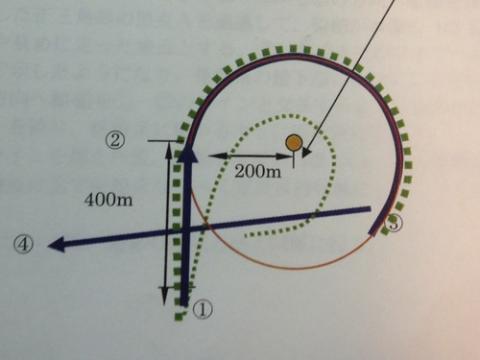According to the Chief Scientist, today’s operation was the first time the RV Mirai dragged for a mooring. They had prepared to do so once before but in the end did not as they could not pin-point the mooring location because its transponder was dead. The transponder on this particular mooring was not dead, it was in fact quite talkative, it simply refused to release on command.
To conduct a dragging operation the ship initially takes position well downwind (~500m) and down current of the mooring position ~200m to one side of the intended track while the drag line is rigged. With an easterly current of ~0.5 kts at the commencement of the recovery this morning, the ship’s initial heading was 270ºT with the the mooring to port and south of the ship. The drag line was then deployed over the stern as the ship maintained position.
The outer end of the drag line is rigged a 100kg weight of chain clump, followed by 50m of chain and 5 grapple hooks, 500m of wire made up of three 100m and one 200m length, connected at a Y shackle which in turn is connected to another 100kg anchor and a 150m wire connected to the ship’s piston wire. The piston wire is used because it is meant to be immersed in sea water and has a very high safe working load. The entire anchor-to-anchor length is intended to stay on the bottom as the ship pulls the string along.
Once the piston wire is connected the ship begins to move ahead at ~1kt. The piston wire is paid out simultaneously at the same speed to ensure the dragging string stays on the bottom. As the ship passes 200m abeam of the mooring position ~400m of piston wire has been paid out, sufficient to provide enough angle that the drag string itself remains on the bottom. At this point the piston wire is then stopped off and the ship will commence its turn about the mooring pos’n at 200m radius until two thirds of the circle is completed. At that point the “noose” tightens as it drawn by the ship to cross the original track line, completing the circle.
The operations this morning commenced at 0850 as the deck crew began the deployment of the drag line. At 1000 the ship began moving ahead once the piston line was connected. Early in the process the tension meter on the lines started giving problems. The tension meter problem was corrected but then the piston wire couldn’t be paid out completely, thereby reducing the angle of the wire from the stern to the bottom. As the angel was not too extreme, the decision was made to attempt the tow and at 1020 with the mooring position south of the ship the turn to port was commenced. About 1130, when the circuit around was completed and no mooring broke the surface, the Captain decided to retrieve the string and start again after lunch. The last anchor was sighted at the surface about 1245, and as it came clear, tangled in the mass of chain was the mooring cable. Just before 1300 the valuable instrument package was onboard and shortly thereafter the transponder and top float. As it turned out, it was a successful morning after all.
Capt David (Duke) Snider
Ice Navigator
RV Mirai
Image: Ship manoeuvring plan for conducting and dragline recovery of a sub-surface mooring

